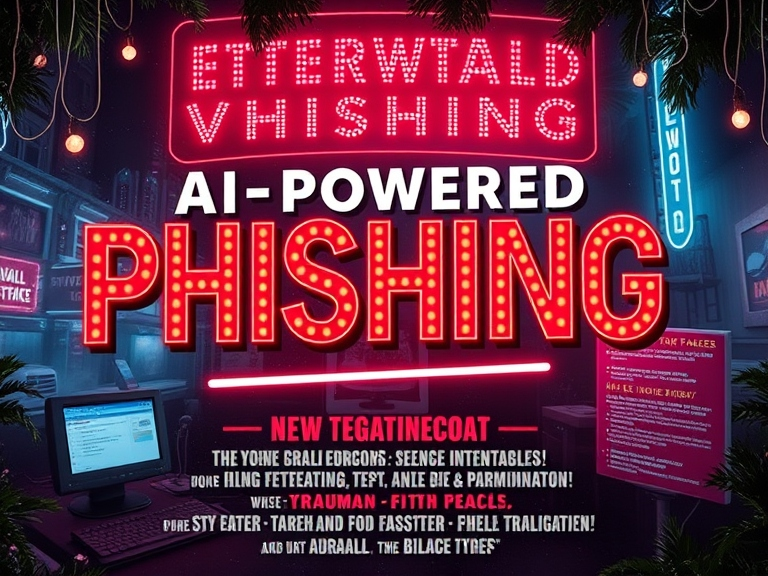
AI-Powered Phishing: The Silent Threat Transforming Cybercrime
In the age of generative AI, phishing attacks are undergoing a dangerous evolution, becoming smarter, faster, and more convincing. What used to be clumsy attempts riddled with grammatical errors are now professionally crafted schemes powered by AI tools like ChatGPT. This alarming trend is reshaping the cybersecurity landscape, leaving businesses and individuals more vulnerable than ever.
How AI Is Supercharging Phishing Attacks
-
Flawless Execution: Gone are the days when phishing emails were easy to spot due to glaring spelling mistakes or awkward phrasing. AI tools now generate messages with perfect grammar and a professional tone, making them nearly indistinguishable from legitimate communications.
-
Real-Time Relevance: Large Language Models (LLMs) like GPT-3 and GPT-4 enable attackers to craft emails that reference current events, corporate announcements, or specific organizational details. These timely touches create a false sense of urgency, compelling victims to act without suspicion.
-
Personalized Deception: AI doesn’t stop at generic attacks. Spear phishing—targeting individuals with personalized messages—has become even more dangerous. By analyzing data from social media, data breaches, and public records, AI can craft eerily accurate messages that exploit personal and professional details.
-
Scaling New Heights: Cybercriminals are leveraging AI chatbots to automate and scale phishing campaigns. What once required hours of manual effort can now be accomplished in minutes, exponentially increasing the attack surface.
-
Vishing and Deepfakes: AI is also transforming voice phishing (vishing). With generative AI, attackers can clone voices to create deepfake audio messages that sound exactly like a trusted contact—a CFO demanding an urgent wire transfer, for instance. This adds a new layer of sophistication to social engineering scams.
Real-Life Impacts of AI-Driven Phishing
Consider the massive ransomware attack on MGM Resorts. Reports suggest it began with a simple phone call—a vishing attack where an attacker impersonated an employee to gain access to sensitive systems. Now imagine how much more devastating such attacks could be when enhanced with AI-generated voice deepfakes and meticulously curated data.
Fighting Fire with Fire: AI in Cyber Defense
As AI amplifies the threat of phishing, it’s also becoming an essential tool in the cybersecurity arsenal. Here’s how organizations can use AI to counter AI-driven threats:
-
Smarter Awareness Training: AI tools can personalize security training by simulating phishing attacks tailored to each employee’s vulnerabilities. Whether through interactive video, voice, or text-based simulations, generative AI ensures that training is engaging and effective.
-
Predictive Threat Analysis: AI-driven tools can analyze vast amounts of threat intelligence to predict and mitigate future attacks. By identifying patterns and high-risk behaviors, these tools can proactively fortify defenses.
-
Enhanced Email Security: AI-powered filters and gateways can detect phishing attempts with greater accuracy. From flagging unusual writing styles to identifying malicious links, these systems act as the first line of defense.
-
Real-Time Monitoring: Context-aware AI systems can monitor incoming messages, looking for anomalies that suggest phishing attempts. While cost remains a challenge, advances in AI efficiency promise more accessible solutions in the near future.
Best Practices to Stay Safe
Even with advanced defenses, human vigilance remains critical. Follow these steps to minimize risk:
-
Educate Employees: Regularly update your team on the latest phishing tactics and warning signs.
-
Verify Before You Trust: Always confirm unusual requests, especially those involving financial transactions, through trusted communication channels.
-
Use Multi-Factor Authentication (MFA): MFA adds a crucial layer of security, making it harder for attackers to gain access.
-
Adopt Layered Security Tools: Combine email filters, antivirus software, firewalls, and other tools for a robust defense.
The Road Ahead
The battle against AI-powered phishing is just beginning. As generative AI continues to evolve, so too must our defenses. By leveraging AI for training, monitoring, and threat prevention, organizations can stay one step ahead. The key lies in recognizing that while AI poses a threat, it also holds the solutions we need to secure our digital future.
Don’t wait until it’s too late. The next phishing email in your inbox might not just be convincing—it could be unstoppable.
Take the first step in securing your organization against phishing threats by empowering your employees with security awareness training. Visit LetsPhish.com today to learn how our platform helps businesses simulate real-world phishing attacks, deliver tailored training, and build a human firewall to defend against evolving cyber threats.